8 Proven Tactics to Get Local Customers
Today, people are looking to shop locally for products and services. In the United States, more than 1 billion searches that contain the phrase “near me” are used every month. With this uptick in local searches, what’s your strategy to get local customers?
In this blog, we’ll explain the three main components of localized marketing, and we’ll include eight specific tactics for each category that will help you get local customers online and in your stores.
What is Local Marketing?
Table of Contents
To get local customers, you need a local marketing strategy. Local marketing, also known as localized marketing, is when you target consumers and a community within a specific geographic radius of your local businesses.
The three main elements of local marketing are: local search, local social, and online reputation management.
When all three are built and optimized together, you’ll achieve the following:
- Increase search engine rankings
- Boost social media engagements and impressions
- Improve your brand reputation to gain and retain more customers
Let’s first examine what a local search marketing strategy is.
Local Search
Local search, also known as local SEO (search engine optimization), is when a business optimizes its website — precisely its local pages, store locator, and local listings — to appear in consumers’ search results when they search for local products or services online.
You will often get more online and in-person business when you appear higher on the search engine results page (SERP).
Our previous research found that, on average, businesses in the Google 3-Pack, receive 126 percent more traffic and 93 percent more actions (calls, website clicks, and driving directions) than businesses ranked 4-10.
Below are three local search marketing tactics to improve your rankings and drive more traffic to your website and local businesses.
1. Claim and Optimize Your Local Listings
Local listings are online mentions of your local business; they typically mention your business’s name, address, and phone number (NAP) and a link to your website. They’ll also include products or services you offer, directions, and store hours.
Local listings exist on local directories like Google, Yelp, Bing, and others. Here’s an example of a Yelp listing:
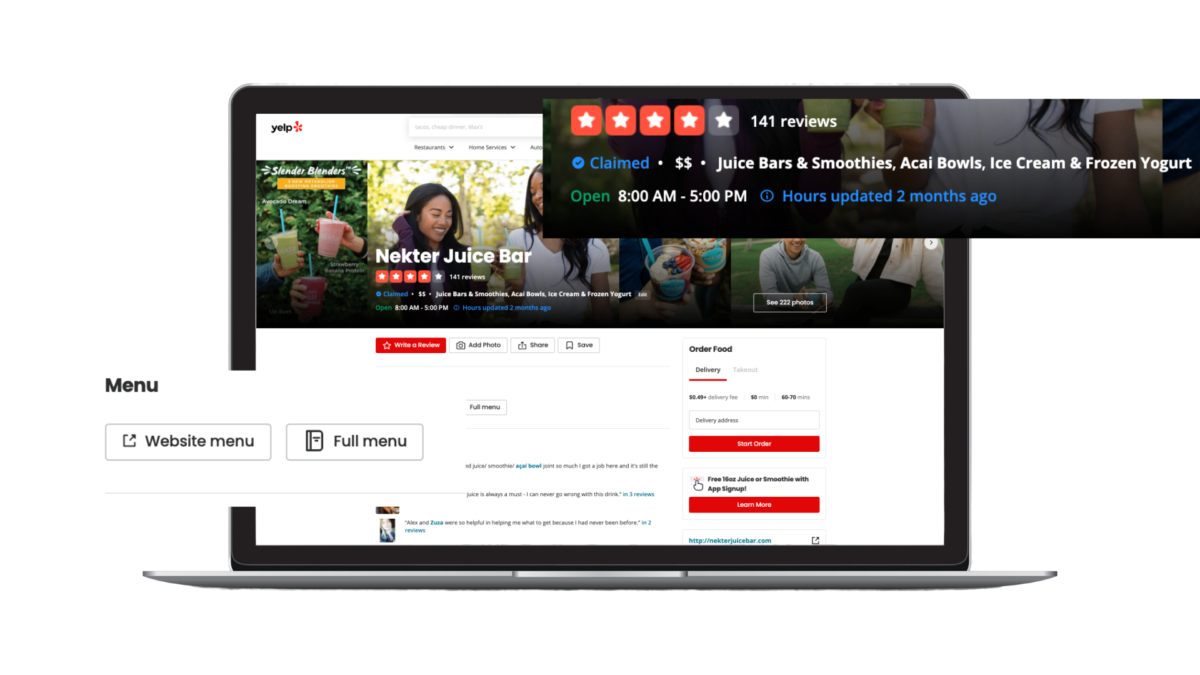
Local listings heavily impact local search. Once you claim and optimize your local listings, they’re more likely to rank higher on search engines, gaining you more local customers.
To optimize your local listings correctly, you must do the following:
- Claim all of your listings across all major directories.
- Include helpful business information, such as NAP, website links, business hours, and directions.
- Upload high-quality images and videos of your local business.
- Incorporate calls-to-action (CTAs) to products and services, specifically current promotions.
- Respond to reviews (more on this later).
Read our Ultimate Guide to Optimizing Your Local Listings for more detailed recommendations.
2. Craft Conversion-Driven Local Landing Pages
Local landing pages, also referred to as ‘local pages,’ are web pages for a multi-location business’ individual business locations. Local landing pages are like local listings; they give basic information about your local businesses. They differ in that you have complete control over them.
Local landing pages can drastically improve the user experience (UX). Not only can online users find your address and other essential business information about one of your locations, a well-optimized local landing page often allows you to:
- Order a product or service online
- Showcase local reviews
- Link to promotions, events, and social media profiles
Here’s an example of a well-crafted local landing page from Hertz:
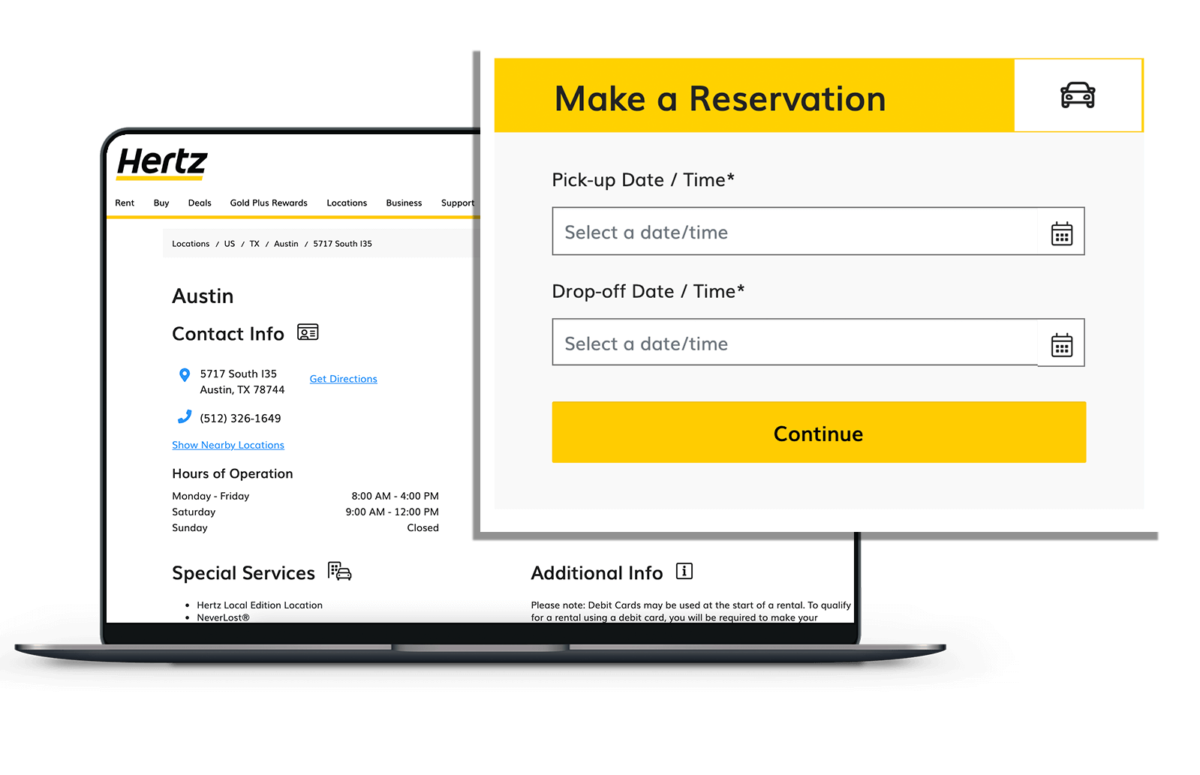
Next, we’ll explain what store locators are and how they work with local landing pages to enhance your UX and keep customers happy.
3. Utilize Store Locators
Store locators go hand-in-hand with local pages. Your store locator is a landing page on your website that links to all your different business locations and their local landing pages.
Store locators often provide links to your online ordering system or directions to a specific location. Here’s an example of ECHO-USA’s store locator.
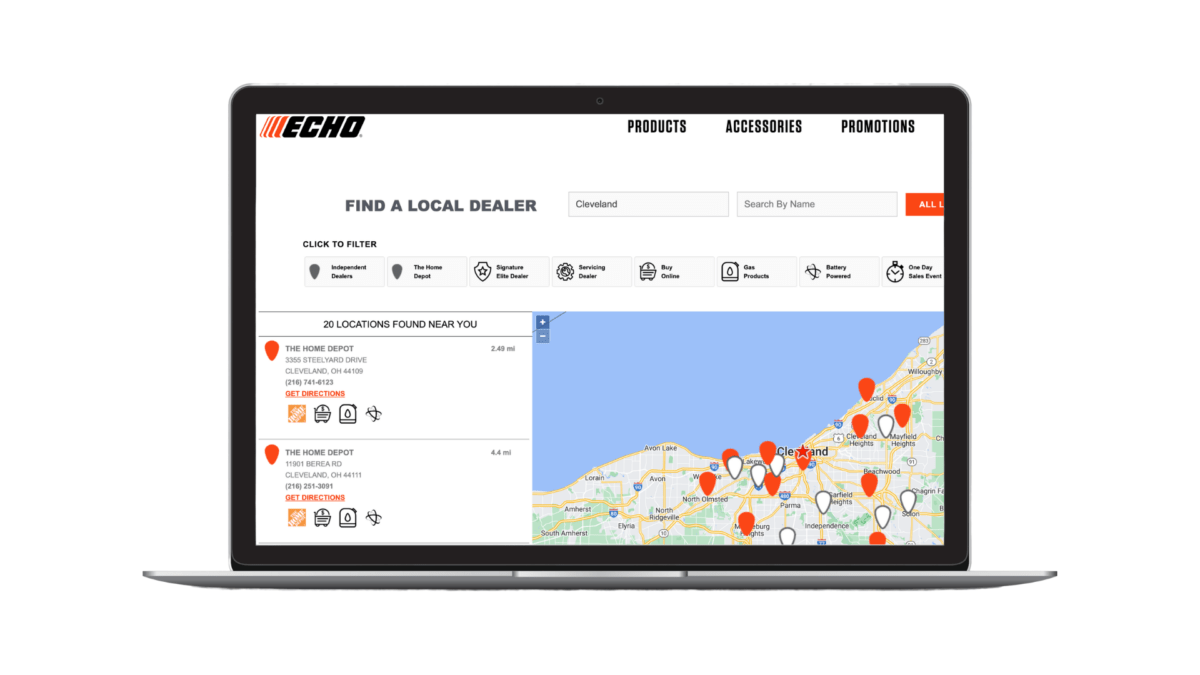
Like local landing pages, store locators also help to improve your UX by keeping users on your website and making it easier for consumers to find your business locations or local dealers that sell your products.
Why does this matter? Considering that 88 percent of online consumers are less likely to return to a site after a bad experience, giving local consumers the best possible UX is essential.
For more detailed strategies on improving your local search to get local customers, download our guide, the Top 10 Things You Should Be Doing in Local SEO Now.
Local Social
Local search deals with search engines and helps you get organically noticed by local customers. The other major digital marketing technique to get noticed is social media, specifically local social.
Local social, also referred to as local social media, is the process of creating local social media profiles for each business location and crafting content you can share with your local community.
Below, we’ll explain why you should create local social profiles and the best type of local social content to promote!
4. Implement Local Social Profiles
As mentioned, a local social profile is an individual social media profile connected to one business location. Local social profiles are primarily for Facebook and Instagram.
You might be wondering, are our corporate social media profiles not enough? National social profiles help with brand awareness and promoting new products. However, our research found that localized content receives 12x the engagement rate of more general or “non-localized content.” Local social profiles help you build relationships with local consumers.
Next, we’ll explain the types of high-engaging content you should post on your local profiles to create stronger connections with local communities.
5. Publish Unique Local Social Content
With local social profiles, you want to publish content that your local consumers will enjoy seeing on their feeds and will engage with. Here are a few content ideas to get local customers:
Enticing imagery: We recommend sharing authentic but high-quality photos and videos of local businesses. These images will help consumers imagine shopping at or visiting your local stores.
Employee highlights and stories: These posts help to humanize your local employees and foster connections between local consumers and staff.
Partnerships with local nonprofits: Show local consumers you care about building their community by partnering with local charities and nonprofits. You can promote upcoming or past events or partnerships with local charities.
Promote new product releases: Build the hype around a new product or service. Loyal customers are often looking for new offerings and services. Show them how you’re separating yourself from competitors.
Post engaging short-form videos: According to our The Secrets of Facebook Post Engagement research report, Facebook posts with videos have twice the correlation with engagement as posts with photos. Generally, the shorter, the better — ideally, videos should be between 15 and 60 seconds.
Download The Localized Social Content Guide for Multi-Location Marketers for more local social tips and tactics.
Online Reputation Management
Online reputation management (ORM) is the third component to getting local customers. ORM is being aware of the online conversations about your brand at the local and national level and actively participating when relevant.
ORM includes encouraging, monitoring, and responding to reviews and social media engagements.
Below are a few key ORM strategies you can implement to get local customers.
6. Gather Online Reviews
Reviews heavily impact local consumers’ purchase decisions. More than three out of four consumers ‘always’ or ‘regularly’ read online reviews when searching for local businesses.
Furthermore, reviews boost your conversion rate. Our The State of Google Reviews research report found that for every ten new reviews earned, the conversion of Google profiles improves by 2.8 percent. Conversion is measured by the percentage of consumers seeing a Google profile who take action to visit the business.
Below are a few proven tactics to encourage customers to write reviews:
- Send an email a few days after a customer receives a product or service encouraging a review.
- Have your customer success team press for reviews directly after calls or interactions.
- Make it easy for customers to leave reviews on your website. Have simple CTAs.
- Encourage social media followers for reviews by posting a product photo and asking their thoughts. You can drop a link in the comments to submit a review if they’ve tried the product.
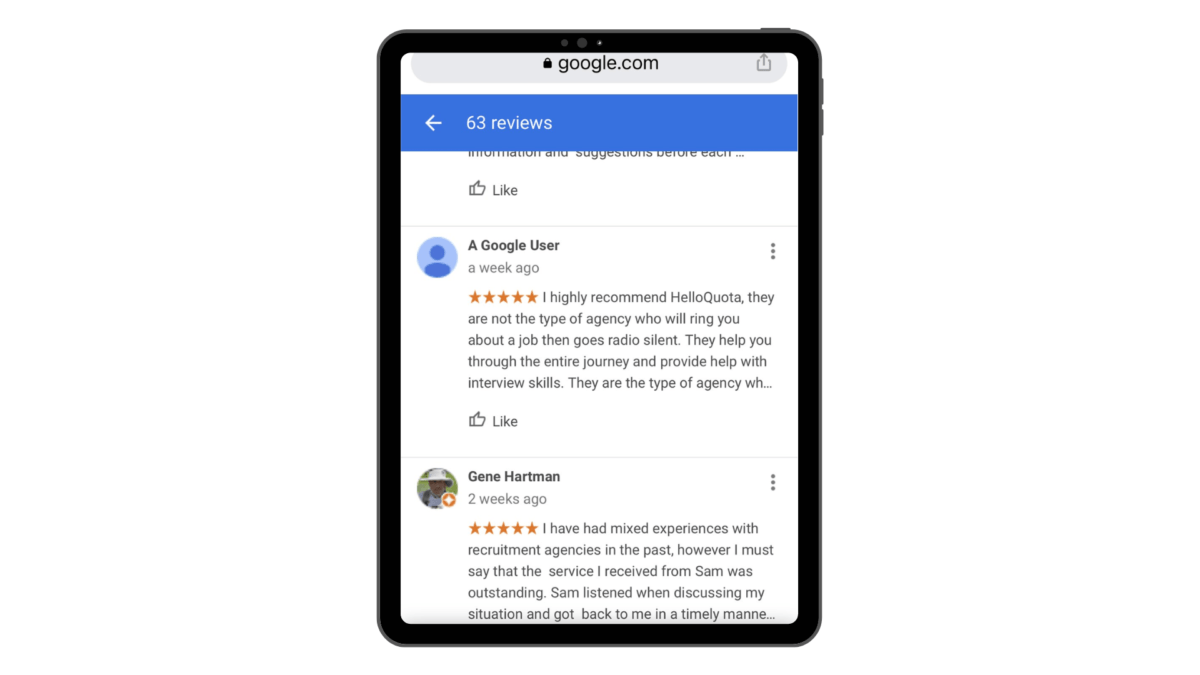
7. Respond to Reviews and Online Mentions
It’s also imperative to respond to reviews. SOCi found that more than three-quarters of consumers leaving critical reviews expect a business to respond to them.
Responding to reviews improves your customer experience and often reduces your churn rate from current customers. Additionally, review response helps convert new customers — especially on Google Business Profiles. For every 25 percent of reviews responded to, the conversion of Google profiles improves by 4.1 percent.
Here’s how to prioritize your review response:
- First, respond to all reviews from the past 30 days.
- Then, respond to reviews from the past quarter, prioritizing negative ones.
- Ensure you also respond to positive reviews with text.
- Skip text-free reviews. There’s little context to these reviews, and responding to them doesn’t move the needle much for other consumers.
For more tips on collecting and responding to reviews, download our Multi-Location Marketers Guide to Online Reputation Management.
How to Manage a Local Marketing Strategy Across Multiple Locations
In summary, there are three main components of local marketing: local search, local social, and online reputation management. Together, these help you get local customers to your website and into your stores.
It might seem overwhelming to update and manage these different elements of local marketing with numerous business locations. SOCi can help!
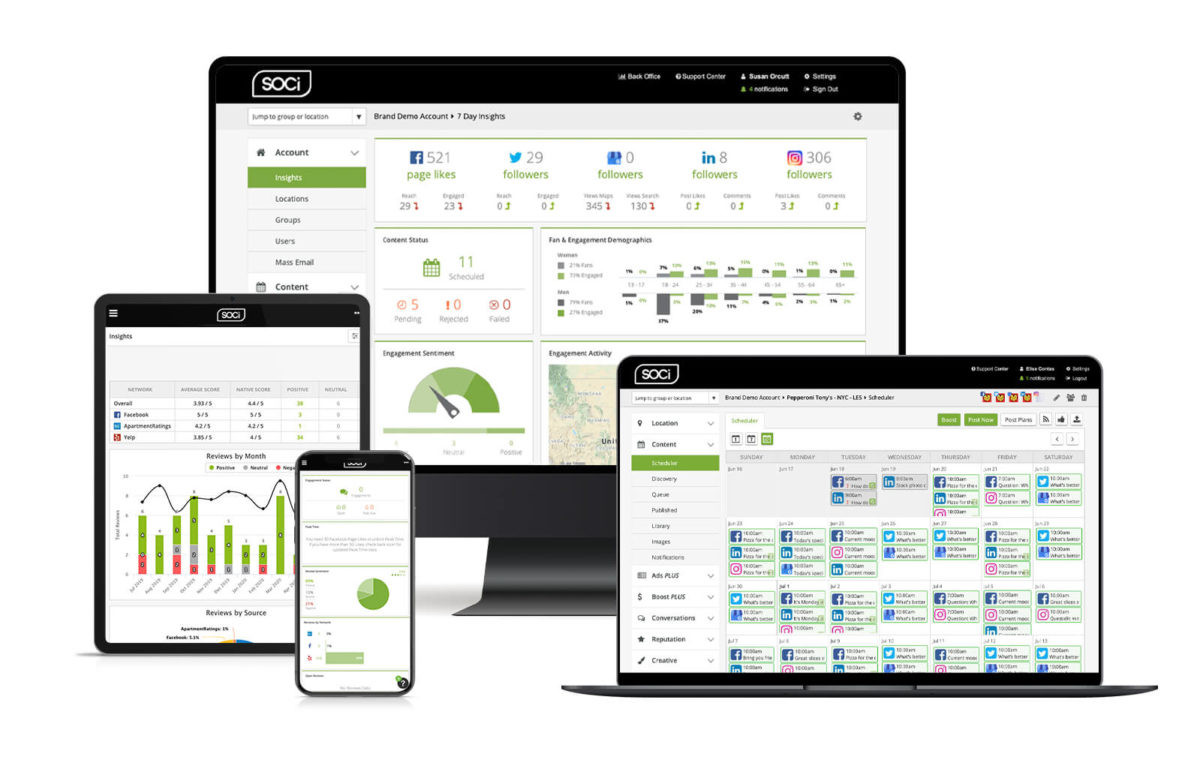
SOCi is built for multi-location marketers to excel. SOCi Listings can improve your local search rankings, while SOCi Local Pages and Locator make it easier for you to create and manage your local pages at scale.
SOCi’s social media management software helps you publish and manage content and engage with local customers across all of your locations.
Lastly, SOCi Reviews makes it easier to receive and respond to reviews across all major reputation and review networks.
SOCi offers all of these solutions under a single login. Request a demo today to learn how you can get local customers now to all of your locations!



